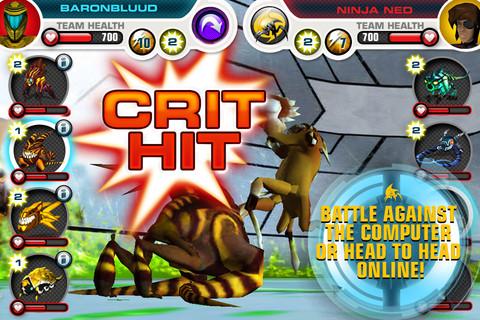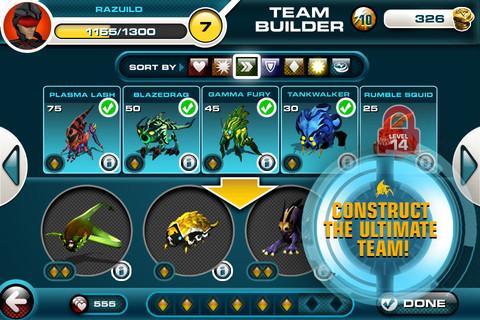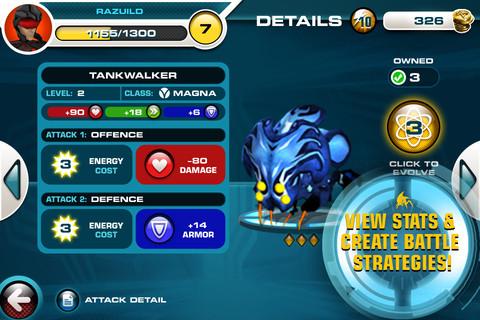- Wondering how to get Monopoly GO! free rolls? Well, you’ve come to the right place. In this guide, we provide you with a bunch of tips and tricks to get some free rolls for the hit new mobile game. We’ll …
Best Roblox Horror Games to Play Right Now – Updated Weekly
By Adele Wilson
Our Best Roblox Horror Games guide features the scariest and most creative experiences to play right now on the platform!The BEST Roblox Games of The Week – Games You Need To Play!
By Sho Roberts
Our feature shares our pick for the Best Roblox Games of the week! With our feature, we guarantee you'll find something new to play!All Grades in Type Soul – Each Race Explained
By Adele Wilson
Our All Grades in Type Soul guide lists every grade in the game for all races, including how to increase your grade quickly!
Nanovor Review
The past of Smith & Tinker’s Nanovor series is long and complicated. It began as a physical card/toy system to be played alongside a PC program (not unlike today’s Skylanders). That program was shut down in the end of 2010, in lieu of its free-to-play browser successor, Nanovor Evolutions (which was also cancelled). There’s also been an animated web series or two floating around. Today, Smith & Tinker revives the series once again, bringing a free-to-play version (simply called Nanovor) to iOS.

Bite-sized battles with no bite
The past of Smith & Tinker’s Nanovor series is long and complicated. It began as a physical card/toy system to be played alongside a PC program (not unlike today’s Skylanders). That program was shut down in the end of 2010, in lieu of its free-to-play browser successor, Nanovor Evolutions (which was also cancelled). There’s also been an animated web series or two floating around. Today, Smith & Tinker revives the series once again, bringing a free-to-play version (simply called Nanovor) to iOS.
Unfortunately, like the Nanovor themselves, this version is best left undiscoverable to the general public.
The concept behind Nanovor is that there exists a hidden microscopic species of silicon-based creatures that live in all the earth’s computer chips. The creatures require adrenaline in order to survive in our atmosphere, and must literally fight for their lives on a daily basis.

It’s your job to assist the Nanovor in their natural life cycle by collecting them and forcing them to fight to the death. Whether you’re actually “helping” the Nanovor or simply making a sport out of their aggressive lifestyle is a bit of a gray area, but at least it’s in their lifestyles to constantly destroy eachother (we’re looking at you, Pokémon).
Speaking of Pokémon, Nanovor plays most closely to the 2000 Nintendo 64 adaptation, Pokémon Stadium. There is no story mode, no overworld, and no move teaching. Nanovor for iOS is a way for you to fight 3D alien/machine battles against the AI and your friends, and little else.
The game starts you off with a handful of critters, each with varying levels of strength. Each battle, you send out a team of four Nanovor, up to the game’s maximum allotted power level. You pit your team against an opposing squad, and fight to the death in turn-based combat.
New Nanovor can be collected or evolved by spending in-game currency, earned through gameplay or microtransactions. There are about 30 in total to collect, with a select few only becoming available after gathering enough experience points. They come in a great variety, from chainsaw-armed mutants to mechanical spiders.

Currency can also be used to purchase Jolts, the equivalent of steroids in the Nanovor sporting world. They nearly double your attack strength for a single round, and you can use up to 10 in a single match.
While there is some amount of deeper strategy in Nanovor (such as speed, secondary effects, and creating the best team within the strength limit), the gameplay itself is laughably shallow. Each Nanovor contains two (and only two) attacks: offensive and defensive. Attacks are devoid of any unique names, leaving an unfortunately generic air around the entire system.
While simplistic combat alone isn’t enough to kill a game, a complete lack of interactivity is. Let me demonstrate a majority of my time with Nanovor:
About twenty minutes into playing, I learned that you could earn some in-game currency for sharing the game via social media. I earned a maximum of 6,000 nanocash that way, and reinvested it by evolving the creatures I was given at the start of the game. Then, I took my slightly strong team into battle against random AI opponents.

Each “turn” consists of choosing an attack for one of your four Nanovor. After a 10 second timer, the game will automatically determine an attack for you. Because the game only offers 2 total attacks per creature, I decided to see how well my team could fare if I left it to the computer to play the game for me.
I only interacted with the game by either tapping the screen to prevent it from shutting off, or by spending the nanocash that I had earned on evolutions and new creatures.
The end result? 50 wins, 5 losses. And that was without determining a single attack or expending a single Jolt.
I “played” Nanovor all day, but I barely interacted with it. The simplicity of combat, combined with the fact that it plays automatically for you when you sit idle, left single player as an entirely non-immersive experience. With no story, missions, or achievements to draw me in, I simply gained nothing from putting my focus into the gameplay. I was winning most of my battles anyway, so why try?
The one thing keeping me from rating Nanovor even lower is the fact that it supports online multiplayer. Gameplay might be simple, but there are enough tactics to keep it interesting between you and a friend. The downside to this, however, is the fact that you’ll have to grind through the single player if either of you want to make any real progress with your collections.
If you’re looking for a creature battler with 3D graphics and decent visuals, Nanovor is free to try. However, if you come into the game as either a fan of the originals or as an enthusiast of involving turn-based combat, you’ll leave disappointed.

The good

The bad
More articles...
Monopoly GO! Free Rolls – Links For Free Dice
By Glen Fox
Wondering how to get Monopoly GO! free rolls? Well, you’ve come to the right place. In this guide, we provide you with a bunch of tips and tricks to get some free rolls for the hit new mobile game. We’ll …Best Roblox Horror Games to Play Right Now – Updated Weekly
By Adele Wilson
Our Best Roblox Horror Games guide features the scariest and most creative experiences to play right now on the platform!The BEST Roblox Games of The Week – Games You Need To Play!
By Sho Roberts
Our feature shares our pick for the Best Roblox Games of the week! With our feature, we guarantee you'll find something new to play!All Grades in Type Soul – Each Race Explained
By Adele Wilson
Our All Grades in Type Soul guide lists every grade in the game for all races, including how to increase your grade quickly!







